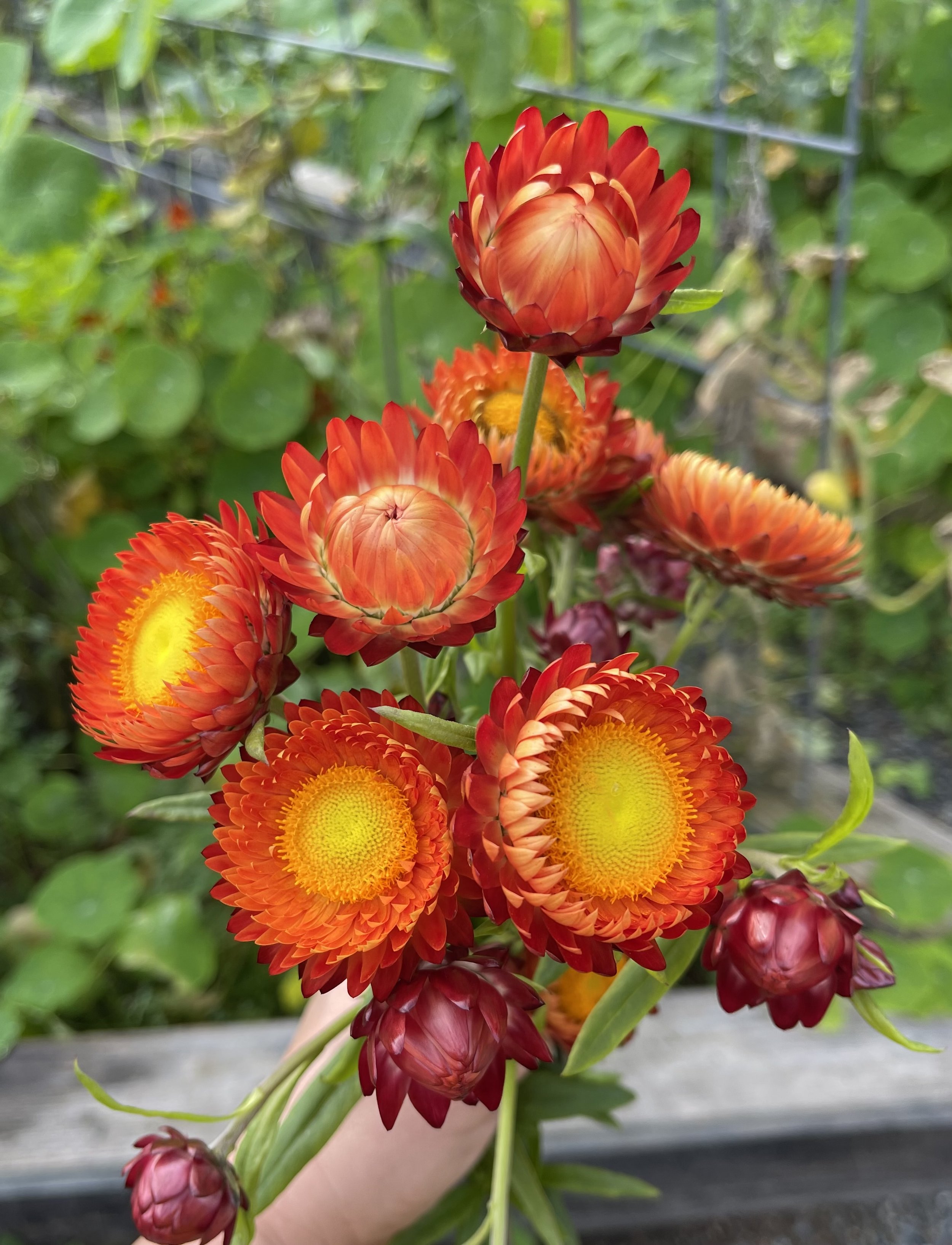As the summer veggies fade and drizzly fall mornings arrive, the ease of winter gardening is upon us. Oddly enough, while the Russian River Valley boasts weather conducive to growing all year, I still see folks in my community gardens putting their beds to sleep for the winter. The summer’s blood, sweat, and tears were enough for some, and the shovel and gloves must hibernate until spring. Others often don’t know where to start or what to grow. The fluidity of frost dates and a lack of hard and fast rules can create uncertainty on what to plant and when. Being born and raised in Utah, I can relate. Harsh seasons and rigid frost dates dictated everything. After relocating to California in 2014, I embarked on a steep but enjoyable learning curve that forced me to garden less from rules and more by instinct. Through trial and error, observation, and regular note-taking, a timeline emerged that helped me garden confidently in our climate.
Over the years, I’ve learned not to be fooled by the warm afternoons of early November; otherwise, I’ll continue harvesting and inevitably get caught by a random rainstorm. Water-logged detritus makes for a mushy cleanup, and the added work isn’t worth the extra days of harvesting. Instead, come the first of November, I remove all plants intolerant of frost, and the newly cleared space will pave the way for cold-hardy crops.
After removing the dead and dying summer plants, I put down a layer of compost to provide nutrients to the soil in the coming months. While doing this, I try to limit disruptions from digging so the web of life that has gained footing over the last season stays intact.
Now, I evaluate my open space and, in the new blank spots, sprinkle seeds or put in the starts of what I enjoy eating. My winter staples are kale, chard, arugula, collards, carrots, radishes, lettuce, spinach, broccoli, and onions. In my experience, plants in the Brassica family (kale, Bok choy, collards, broccoli) have a fuller, sweeter flavor and often carry fewer pests in cooler temperatures. If you happened to plant some of them over the summer, let 1-2 plants go to seed and forget about them. Come late winter, the reward will be a second harvest.
Ruby Red Strawflower
If you’re feeling ambitious, seed some flowers amongst your veggies to brighten the winter months. Poppies, sweet peas, bachelor buttons, nasturtium, calendula, strawflower, and nigella prefer to be sowed directly and pop up as soon as they deem the weather worthy of their arrival. I love walking in my garden on a cool winter morning and discovering new seedlings emerging.
Finally, the garden will do the rest as the rains become steady. It’s time to sit back, relax, and enjoy the holiday season. Before you know it, your garden will have an abundance of greens to harvest for sautes, smoothies, soups, and salads. Aren’t we lucky to live in the paradise of the Russian River Valley? Let’s give our gardens a nod of Thanksgiving; after all, they are a steady companion helping us grow in more ways than one. Happy Gardening!

